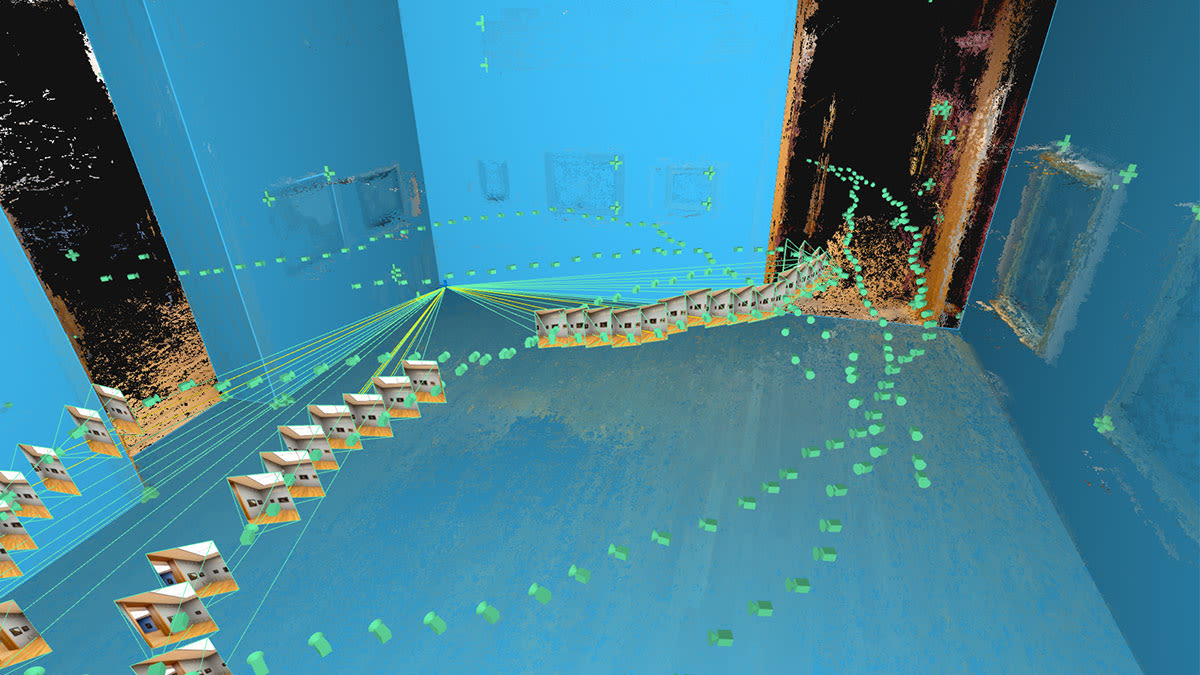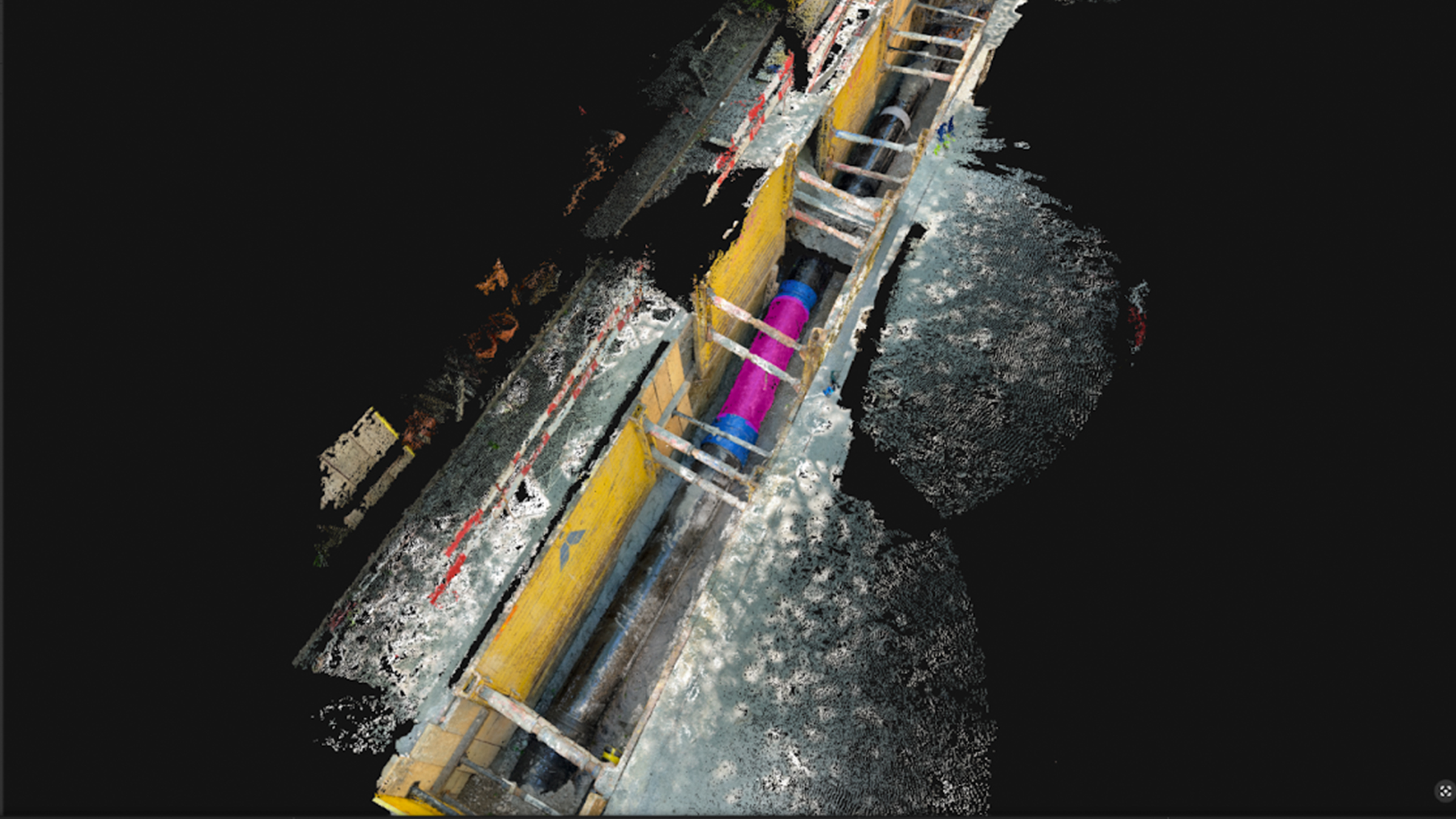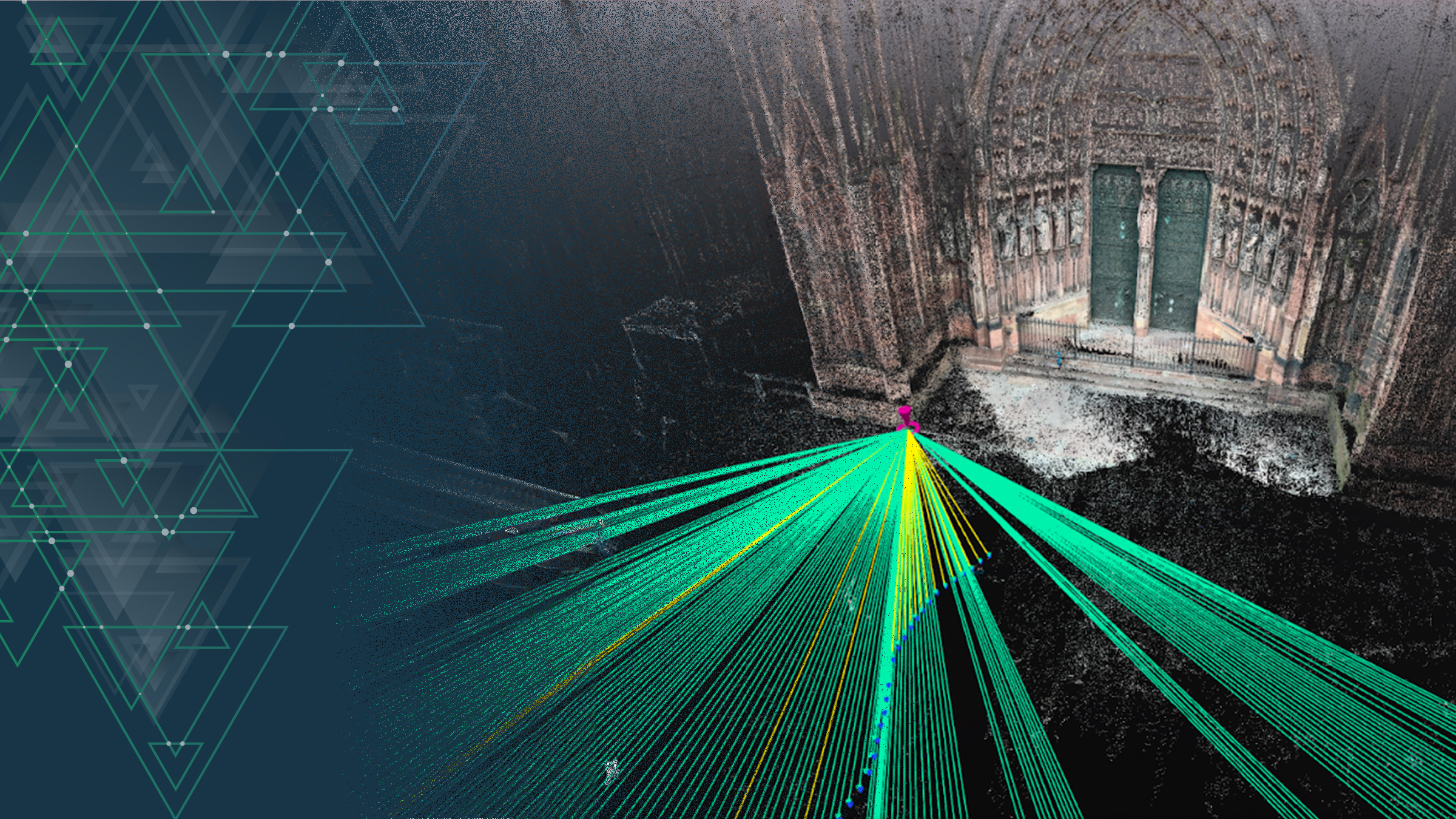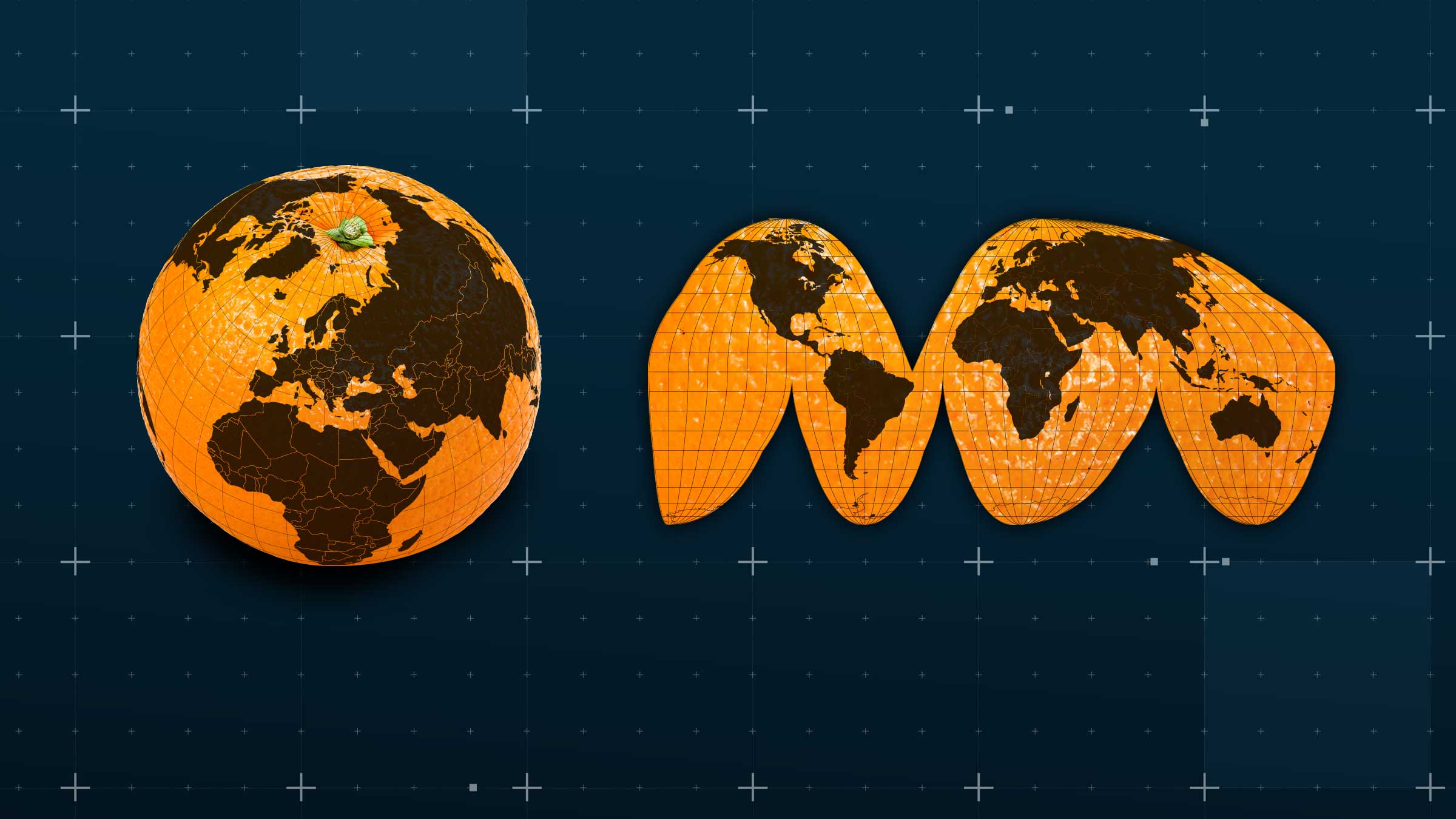Automation at scale: AI and machine learning at Pix4D
Contrary to common fears, artificial intelligence and machine learning are not things to be afraid of, but tools that can elevate our abilities. With algorithms that surpass human capabilities, AI can be used to revolutionize photogrammetry. By leveraging automation, our algorithms empower you to achieve greater productivity and efficiency in your daily work. Join us as we delve into the remarkable ways Pix4D’s AI and machine learning algorithms can improve your workflow and take photogrammetry to new heights.
Automated workflows and machine learning
Machine learning is a subfield of AI. It focuses on developing algorithms that enable computers to learn and adapt without specific instructions or programming. You may be surprised to learn that, if you are using Pix4D products, you are already using many invisible algorithms powered by machine learning, such as our Auto GCP algorithm.
The Auto GCP algorithm is a subsystem for automatically detecting ground control points. GCPs are critical for ensuring a project’s accuracy. GCPs are points with known coordinates that can easily be identified in images. Marking GCPs is a time-consuming manual process, however, Pix4D has developed an algorithm that automatically does this work for you! Pix4D has combined machine learning and computer vision to pinpoint the exact center of a GCP almost instantly with pixel-level accuracy.
What are the benefits of integrating artificial intelligence and machine learning into photogrammetry?
Below you can see another Pix4D algorithm at work, this is one that has removed the sky from the background of an image to reduce the point cloud noise.
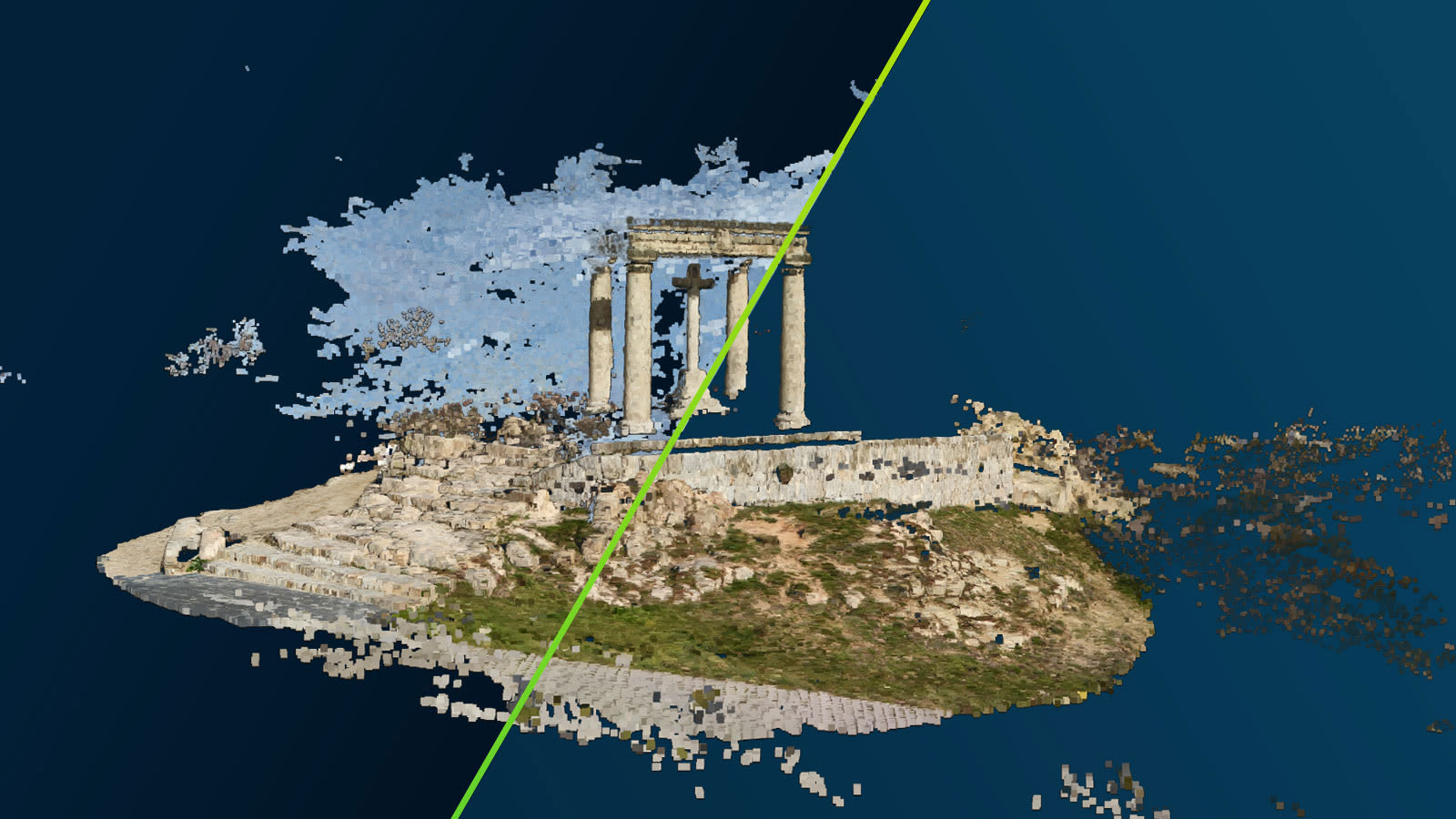
These algorithms are important because they automate tasks with little value. And what is more, they often do these tasks faster and more accurately than a human. Detecting manholes or water drains in images is another example where a Pix4D algorithm has automated a repetitive, manual task.
As a surveyor, if you need to identify water drains in images you need to look at several images, zoom in, and search for them. This is tedious and time-consuming. What you can do, however, is use our machine learning model to automatically identify these urban elements and mark their position in 3D. You can then export this data to be used in CAD systems. It’s just a click away and saves you hours of work.
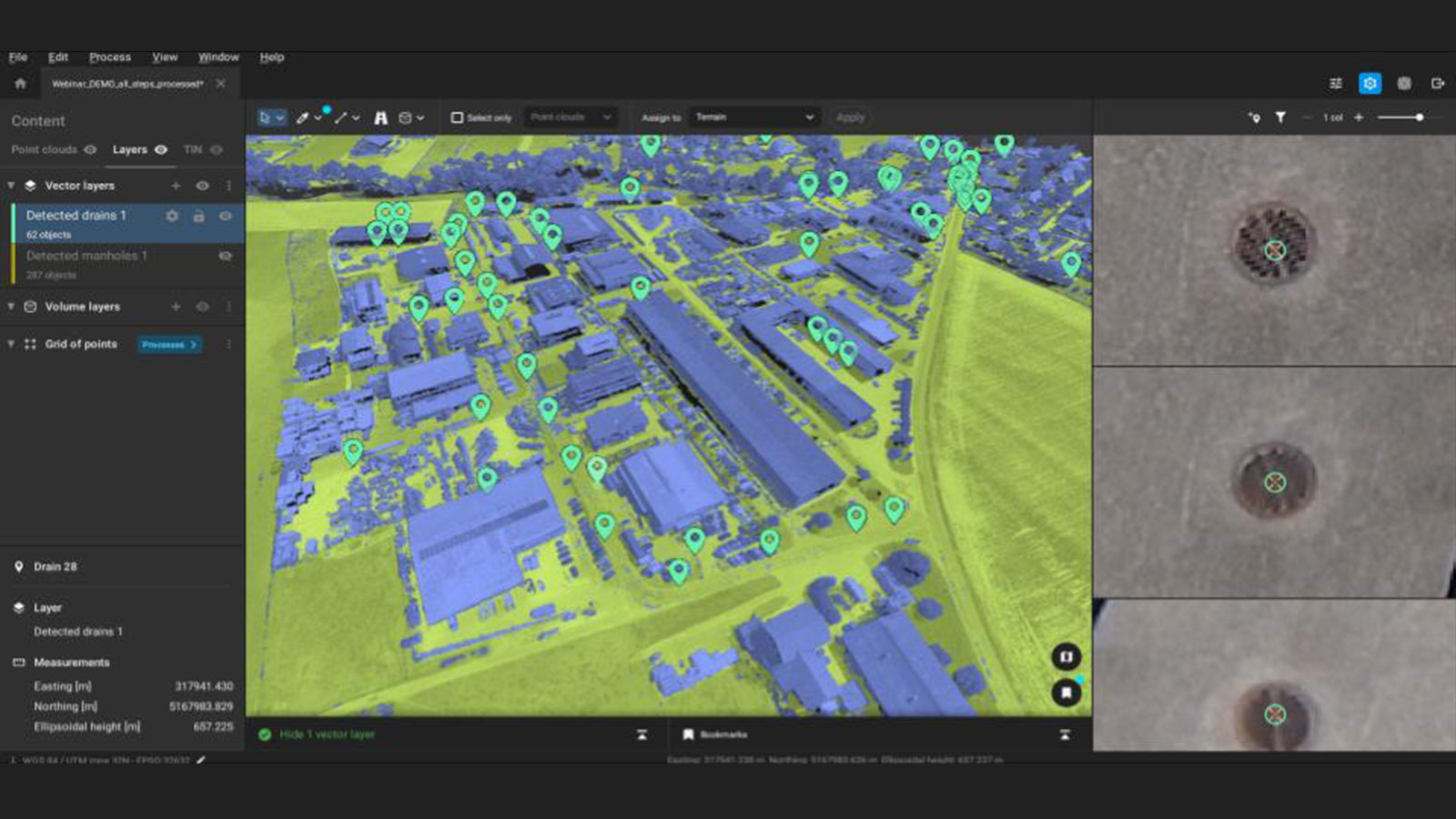
Finding structure with machine learning
We, at Pix4D, are moving towards what we call “semantic photogrammetry”. This is how we describe the idea of photogrammetry software having a semantic understanding of a scene.
As a human, when you enter a room and look around, your brain does this automatically. You know there is a table, there is a wall, and there is the floor - and you connect and locate them together in space, which is a human understanding of our surroundings. Now thanks to PIX4Dcatch, your smartphone, and PIX4Dmatic, we can bring this understanding of the scene to your software. We have developed a machine algorithm that can identify the most important geometric information in a scene.
A machine learning model trained to recognize lines and their junctures
An example of semantic photogrammetry is intersection tie points. ITPs are a new type of tie point (similar to manual tie points) that use state-of-the-art machine learning. Thanks to our algorithm, the software can recognize where there is a wall, where there is a floor, and where they connect.

The museum room below has been scanned with PIX4Dcatch and processed into PIX4Dmatic. The green lines on the right are the machine-learning model that has identified where the wall is, and where the floor connects to the wall. ITPs take the point where these linear features intersect, and use this information to improve the photogrammetry results.
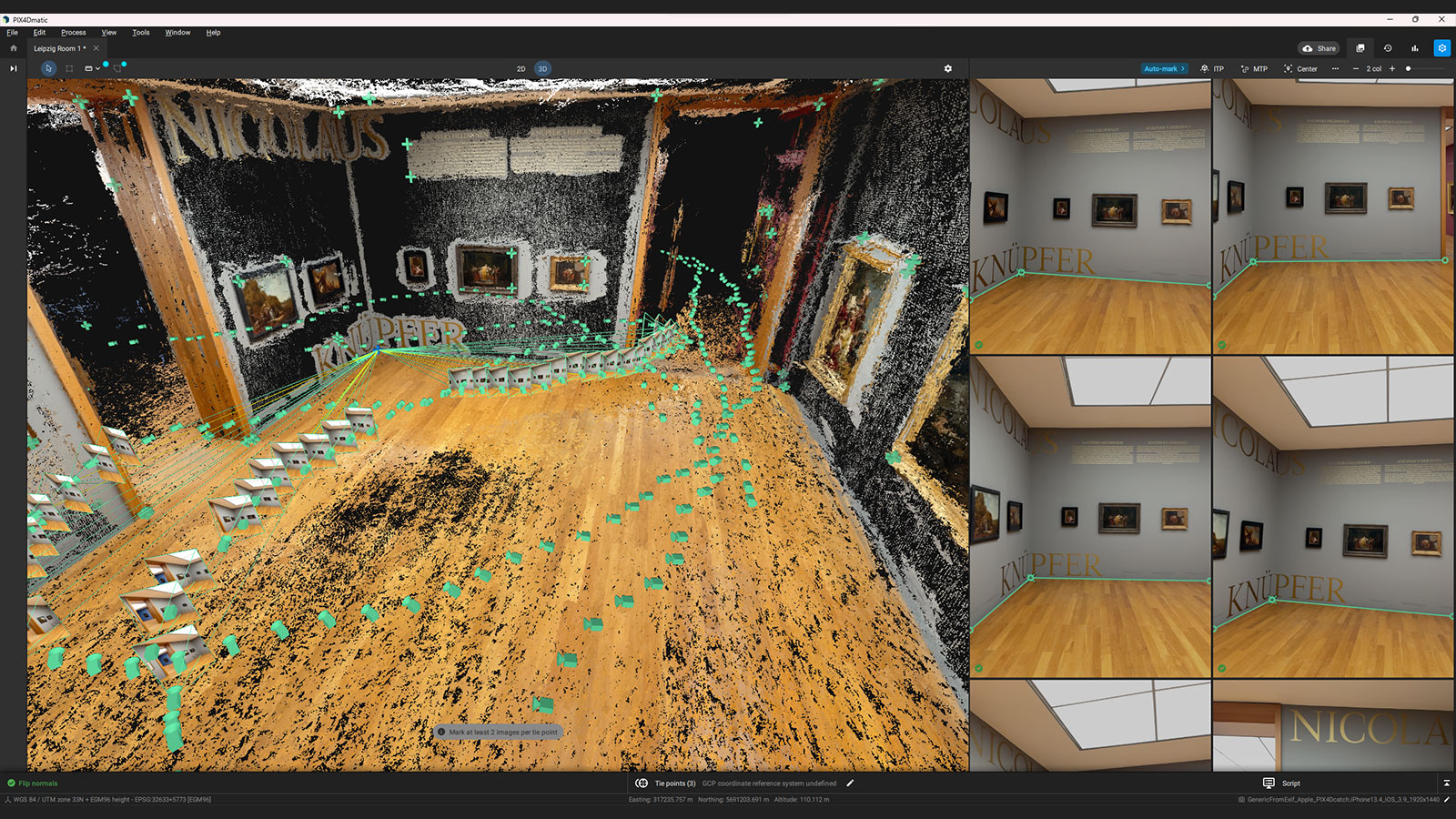

With untextured white walls, there is very little that traditional photogrammetry can do, so we have used our “semantic understanding” of the scene to improve the results. Here the intersection tie points complete the information that is missing.
Once the planes have been identified the mesh of the scene is vastly improved, as you can see from the image below. This is because the mesh system in PIX4Dmatic "semantically" takes into account the planes. This is already available in PIX4Dmatic, and we are currently working on an improved version.
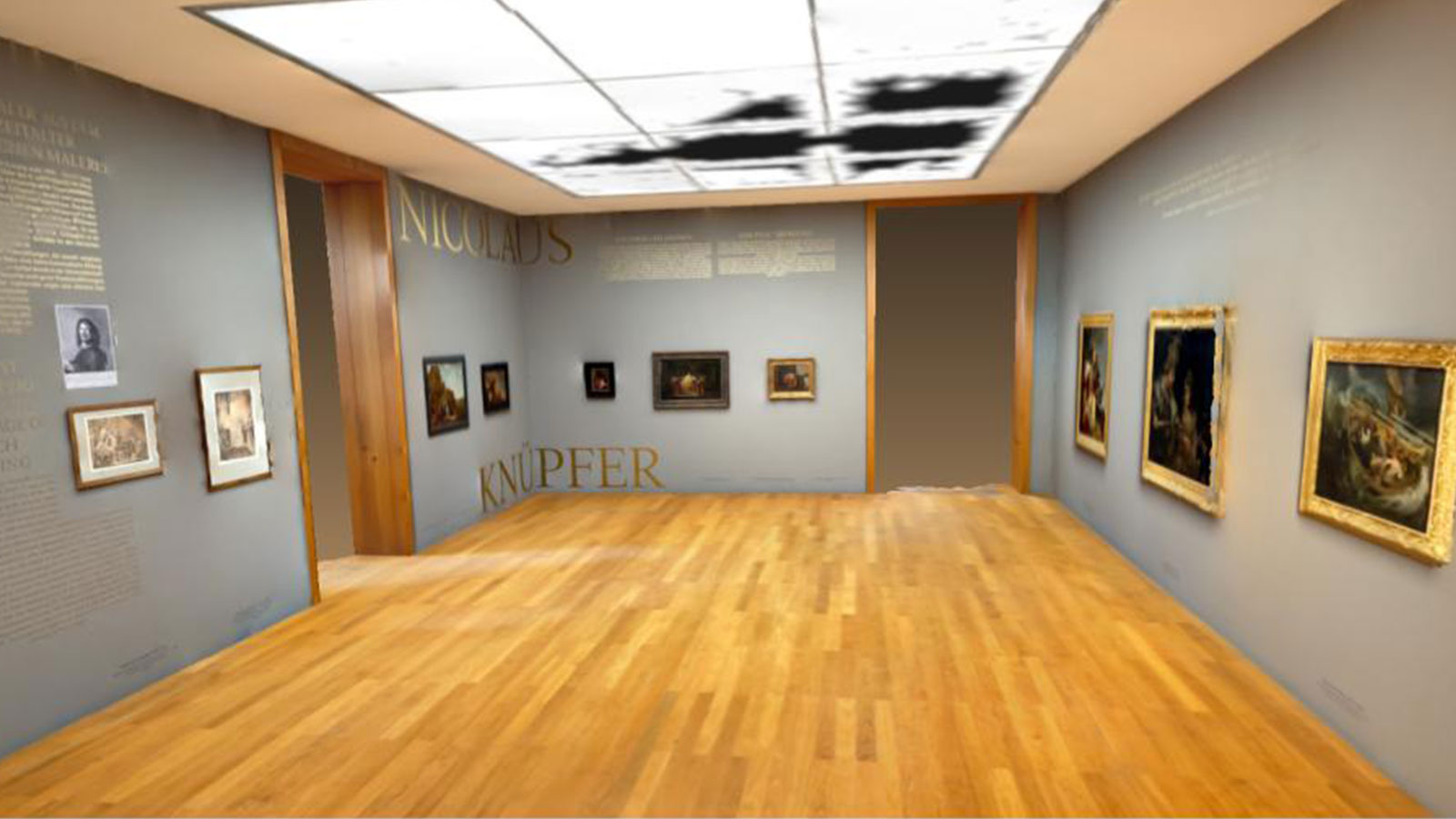
Machine learning adds speed, accuracy, and improves the value of your work. It removes tedious tasks and delivers better results. Pix4D is combining machine learning with photogrammetry to go beyond what we have today, to create an optimal, smooth, and efficient workflow, automating tasks where possible for ease and efficacy.
